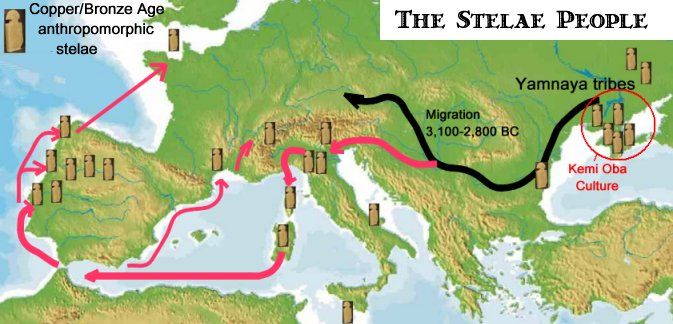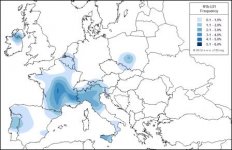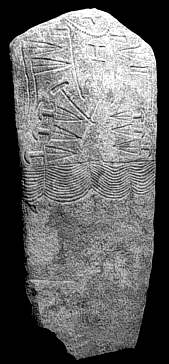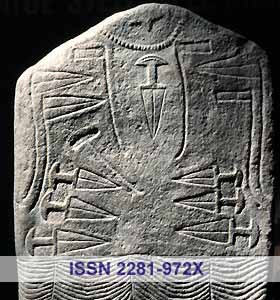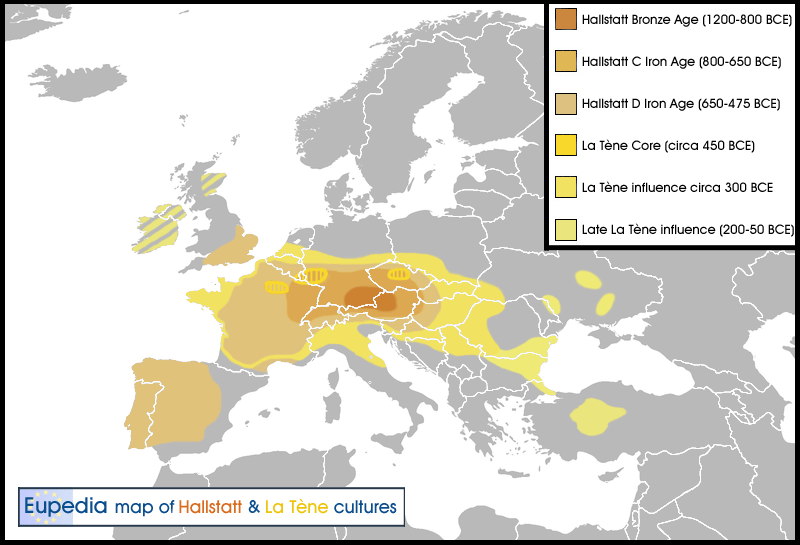R1b came to Iberia with Celtic Hallstat migrations at the very very very earliest 3,000ybp. R1b is very popular in Iberia today but it has only been like that for about 2,500 years. Iberia has a very very young R1b subclade R1b Df27 if R1b in western Europe spread from Iberia u would find R1b L51, R1b L11/P310.
R1b P297 spread with Indo European languages. It was first in the norther middle east then got to the steppes(central Russia) and formed into R1b M269 and R1b M73. R1b M73 spread as a small minorty with indo Iranian languages who spread out of Russia with
Sinshta-
Abasevho cultures. R1b M269 spread probably to the
Balkans or somewhere else in eastern Europe from the steppes about 6,000-7,000ybp. Then R1b M269 formed into R1b L51 and spread with Germanic Italo Celtic languages to western Europe about 5,000ybp. By 4,500ybp they where already conquering just about all
Bell Beaker in Germany that is why two 4,600 year old Germany Bell Beaker remains had R1b one was for sure R1b M269.
R1b L11 split into R1b S116 which went to southern France and Germany and started
Unetice culture and spook proto Italo Celtic. R1b U106 spread to northern Germany eventulley starting the
Nordic Bronze age about 4,000ybp. Some R1b U106 was also in the
Urnfield culture because 3,000 year old Urnfield R1b i tested its haplotype is was almost for sure R1b U106.
R1b S116 split into R1b U152, R1b L21, R1b Df27.
R1b L21 spread to the British isles with proto
Insular Celtic language about 4,000-3,000ybp. R1b U152 where some of the earliest Iron makers in Europe they lived around Switzerland and Austria some spook proto Italic some spoke a Gaulic Celtic language. The Italics migrated and conquered Italy from 3,200-2,800ybp and started
Villnoaven culture. The R1b U152 Celts mainly spread their iron making and conquered parts of France and became the Gauls. They also spread Hallestat culture to Iberia but had R1b Df27 from 2,700-2,500ybp.
Hallestat started
La dene culture both cultures combined where extremely spread out and conquered many areas in eastern Europe to.
R1b in western Europe is defintley connected with Germanic Italo Celtic languages. there is no way it spread from Bell Beaker in Iberia. the R1b in 4,600 year old Bell Beaker in Germany totally goes with what i am saying because by that time R1b and Germanic Italo Celts had conquered bell Beaker in Germany.
